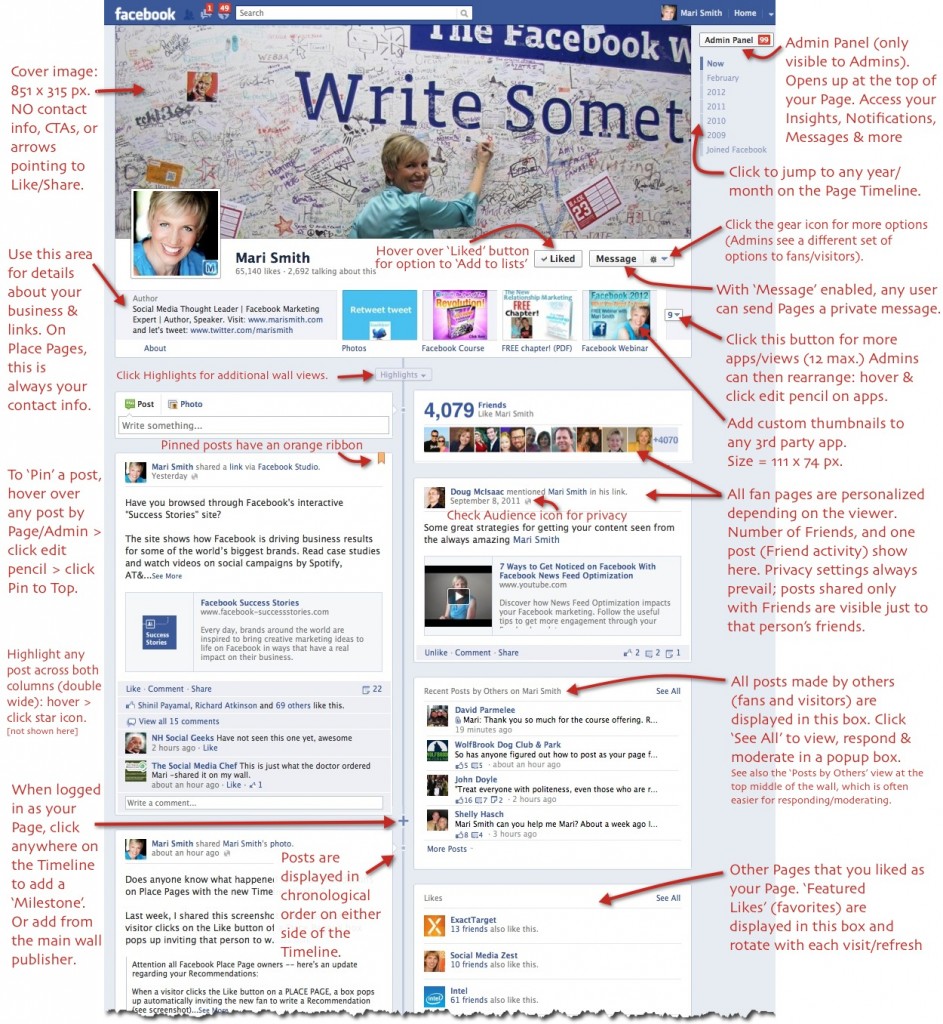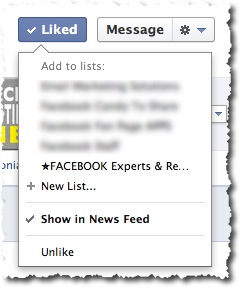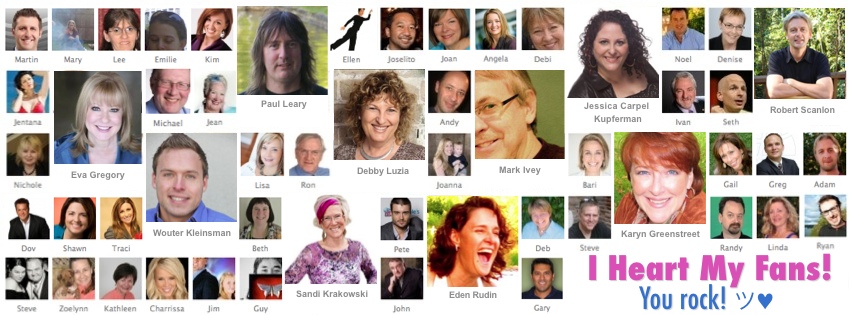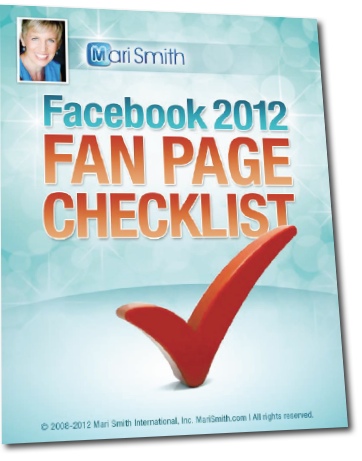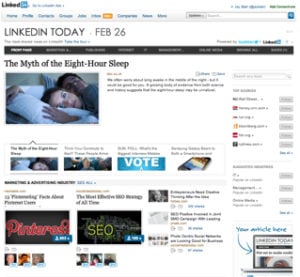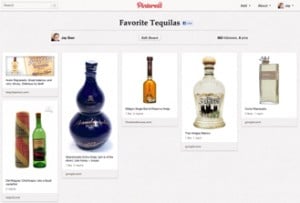You can’t be a marketing professional and NOT create content. In fact, the Content Marketing Institutionsaid so when it published this interesting statistic: “93 percent of marketing professionals create, or plan to create content marketing as part of their overall programs in the next year.”
The question is…are you creating that content in such a way that it takes your business to the next level like American Express, Mint.com and HubSpot did? And is your strategy advanced enough to handle all the changes to the content landscape?
Well, if you don’t have a strategy…or if it’s not where it needs to be…this guide will help you get up to speed.
Creating content marketing personas
The demand of delivering constant content are very real for any business, and that demand can sometimes force you to generate and push out content that is not geared to your audience.
In fact, push the wrong content out and you might attract the wrong prospect and even lose high-quality prospects.
The best way to make sure that never happens is to have a plan that identifies your ideal prospect and then run all content ideas through that filter.
This is done by identifying their needs, creating behavior-based profiles and using demographics to create user personas.
Segment – To build the proper content marketing personas you need to ask yourself these questions:
* Who is your customer?
* What are their problems and desires?
* What kind of content do they consume?
* Where do they consume content?
* How can you engage them?
* Who is your customer?
* What are their problems and desires?
* What kind of content do they consume?
* Where do they consume content?
* How can you engage them?
From this data you can start to think about your ideal content marketing prospect…and build a representation of this individual.
To get started, simply study your current readership. Use online surveying tools to identify what they like and want.
As you uncover information you will probably start to see patterns.
For instance, if you provide content on house cleaning you might discover that you have people who read your content because they want to do the work themselves; have a crew they want to teach; or want someone else to do the cleaning for them.
Identify needs – Next, start to build an outline of the needs of each segment by asking questions like:
* What is their number one challenge?
* What trends are driving their industry?
* What one need can you fulfill?
* What’s the best way to solve those needs with content—through video, white papers, blog posts, etc.?
* What is their number one challenge?
* What trends are driving their industry?
* What one need can you fulfill?
* What’s the best way to solve those needs with content—through video, white papers, blog posts, etc.?
When it comes to identifying needs, look at the path those prospects take to get to you with your web analytics. As you study that path uncover insights about that segment.
Once you’ve rounded out your segment personas you’ll be able to create content geared to them on a fly…never having to worry about neglecting their needs or attracting low-quality prospects.
Creating a content marketing strategy for tablets
For the longest time content marketing strategies geared to desktop views dominated. That is until the iPad…which changed everything.
Just under 2 years Apple sold over 55 million iPads. Last quarter alone they sold over 15 million units.
And in the months of December 2011 to January 2012 the number of people who own an iPad doubled.
According to the Economist, because of tablets like the iPad we are moving toward a new lean back age of content consumption we haven’t seen since the book.
Jason Calacanis’ called this new age “curl-up” technology. On public transit you’ll notice less people reading books and more people using tablets. And if you are on a plane you’ll notice the same thing.
Of course, they’re not all doing the same thing. Some are playing games while others are reading and still others are listening to music.
The days of how we consume content online have changed…you have to wonder about your content marketing strategy and how it fits into this new tablet world. In fact, crack open your Google Analytics and you’ll see the number of people hitting your site with tablets is growing quickly.
So, what you create won’t change as much as how it’s distributed. For example:
- Combine multiple channels of content into one tablet-friendly stream – If you are a content publisher that produces multiple content channels (think about all the channels like Gawker, Gizmodo, Jezebel, etc. under one masthead), you can create a unique experience by combining all of those sources.
- Think newsreaders as modern form of SEO – People are starting to discover and consume content through news readers like Taptu, Pulse and Flipboard as if they were search engines. The bonus is content tagged gets hire rankings.
- Team up with tech developers – If you are a content publisher, you don’t need to create a new way to consume content via the tablet. Find a startup creating the content and hook up with them. These partnerships can build both of your audiences without you having to re-invent the wheel.
- Develop for multiple users – Until the price of tablets drops, more than one person will more than likely share a tablet. So design for a multi-person device. For example, users may not want to stay logged in [which affects passwords] and your app icons should be easily identifiable.
Another noticeable change will be the duration of content. You can now create longer videos knowing that they are more likely to get consumed than when our only option was viewing them on desktop.
This is true about longer blog posts, too. The adoption of tablets with content usability apps likeReadability makes reading a screen a better experience.
Creating a mobile content marketing strategy
Your biggest challenge to your content marketing strategy will come from people who use mobile phones to consume content. While smartphones have improved, mobile is still a pretty difficult user experience for several reasons:
* Downloads are slow
* No mouse for selection
* No physical keyboard
* Small screen and small text
* Downloads are slow
* No mouse for selection
* No physical keyboard
* Small screen and small text
Even reading comprehension suffers when it comes to mobile content consumption. So what should you do? Follow these eight steps:
* Step 1 – Create a goal that states what you are creating (app or mobile site) why you are producing it (generate leads or produces sales) and how you plan to measure success.
* Step 2 – Develop content for people of all ages even though the data might suggest that young people are the only users.
* Step 3 – Remember that you will be competing in a very distracted arena. Your user will only being thinking of you for only the smallest of a fraction…so you got to make that sliver of attention count for them.
* Step 4 – If you decide to build an app, make sure it’s not just because “everyone else is doing it.” You must have a solid business reason for creating an app…
* Step 5 – Using the information you collected above for personas to understand your target audience…and then deliver the substance and distribution channel they want. Make them feel special and they’ll stick around.
* Step 6 – Consider location as a key to your mobile strategy…and how your content and their location can be used to deliver even better products.
* Step 7 – Don’t repurpose count…but recreate. Give your mobile users, especially if you’ve created an app, access to exclusive information.
* Step 8 – Build social sharing features into your mobile content and constantly work on keeping them engaged.
* Step 1 – Create a goal that states what you are creating (app or mobile site) why you are producing it (generate leads or produces sales) and how you plan to measure success.
* Step 2 – Develop content for people of all ages even though the data might suggest that young people are the only users.
* Step 3 – Remember that you will be competing in a very distracted arena. Your user will only being thinking of you for only the smallest of a fraction…so you got to make that sliver of attention count for them.
* Step 4 – If you decide to build an app, make sure it’s not just because “everyone else is doing it.” You must have a solid business reason for creating an app…
* Step 5 – Using the information you collected above for personas to understand your target audience…and then deliver the substance and distribution channel they want. Make them feel special and they’ll stick around.
* Step 6 – Consider location as a key to your mobile strategy…and how your content and their location can be used to deliver even better products.
* Step 7 – Don’t repurpose count…but recreate. Give your mobile users, especially if you’ve created an app, access to exclusive information.
* Step 8 – Build social sharing features into your mobile content and constantly work on keeping them engaged.
Creating a content marketing social promotion strategy
Speaking of social sharing, what do your plans to spread this content look like? You are planning to promote the spread of your content, right?
Even if you are on top of your game…it’s best you understand the best strategy for social promotion.
For example, were you aware that Twitter and Google+ are both beat out by Facebook as traffic generators? And were you aware that this was the case because of Facebook’s new subscribe button?
This was based on an informal study done by Kevin Rose:
What’s important to notice about this finding is that Kevin Rose has over 1,200,000 Twitter followers at the time, but received 10 percent more clicks from Facebook.
To boot, he only got 1/7th as many clicks over at Google+.
The lesson is this: the Facebook audience is way more engaged than the other two social media sites.
Do you think this would change your social media content marketing strategy? You bet it should!
This is not lost on major brands like Good Housekeeping, Cosmopolitan and National Geographic who’ve noticed that Facebook is slowly passing Google Search as the top referrer of traffic to their sites.
Conclusion
Five years ago your content marketing strategy was pretty simple: create content for the web. This meant writing posts, creating videos or building an archive of podcasts.
While those elements still apply, the landscape in which that content is consumed has changed drastically. You need to be prepared.
What other advanced strategies do content marketers need to pay attention to?
Neil Patel is the co-founder of KISSmetrics, an analytics provider that helps companies make better business decisions.
Written By: Neil Patel Source: GeekWire.com
Written By: Neil Patel Source: GeekWire.com












